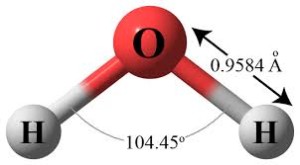The most common scenario is your board is in a bag strapped on top of the car. When you take it out you realize how warm the deck feels . Warm-to-the-touch means warmer than 98 degrees. The water has been getting warmer, you notice as you wade in, but it is still only 64 degrees. As you lower the board into the water, you briefly wonder if that piece of tape you slapped onto last weekend’s rail crunch is still doing its appointed job. But here comes a good gust, and away you go.
Your board’s temperature is rapidly dropping from the roof-topped 98-plus degrees down to the water’s 64 degrees. As the air inside the EPS foam cools along with the rest of the board, it contracts, reducing the pressure within the board.
If that bit of tape on the rail crunch holds, then this reduced pressure will only cause a slight thinning of the board, maybe a bit of a depression at soft spots on deck. But if that tape has fallen off, then your board will eagerly suck in water for the duration of the cooling-off period. Prodigious quantities can be inhaled this way.
The day turns out gorgeous, you stay out for 3hrs. As you carry the board back to the car, you think it might feel a little heavy, and you notice that the piece of tape on the rail crunch has departed. Better to stop by my shop on the way home, then, and have it fixed.
I put your board on the scale and inform you that it now weighs 3 lbs more than when you last visited. Which leaves about 2 lbs of water in the EPS core. Dang!
I tell you that – the impending Santa Ana notwithstanding, so very sorry – I will need to keep your board for at least 10 days. And that even at that, I cannot guarantee total drying.
It took only 3 hrs to take on this water. Why then 10 days to shed it again??
The inhalation occurred primarily due to pressure differences, causing a substantial flow of solid water through even a very small orifice.
Evacuation of water occurs primarily due to evaporation, which requires energy to cause water molecules to mobilize; and air exchange, to carry off these mobilized molecules. For this air exchange, we can generally only offer a 5/16″ diameter vent fixture. That’s less than 1/10th square inches, to evaporate moisture out of the approx 30 liters of air that is free to move in the EPS channels of a 100 liter board. The resulting evaporation rate is dismal, to put it mildly, hence the length of time required.
Think of a wet towel: you hang it up on the line, with a dry 75 degree breeze flapping it about, and it will be bone-dry by nightfall. But bunch it up, throw it in the hamper, and it will still be wet next week. Little surface area, little energy to mobilize the water molecules, little air flow to carry them off.
Under normal circumstances, your board is like that wet towel in the hamper. Or worse, if you zip it up in a foil bag. But there are things we can do to improve matters a bit!
The water molecule is asymmetrical, where the two hydrogen atoms are attached to the oxygen atom like the big feet to the body of my little waterman perched above. This makes the molecule positive on the hydrogen side (the feet), and negative on the oxygen side (the head). Put lots of these lopsided, “magnetic” molecules together, and they will form intricate structures.
Up to about 40deg C, water really is mostly H4O, a tetrahedral structure with four triangular sides. Two hydrogen atoms belong to the first O atom, while the other (2) H are shared with the neighboring O atom, which shares (2) H atoms with its neighboring O atom, which shares …. etc etc, making up the lattice structure of water.
All molecules are constantly moving. Heating the water increases this motion, straining the hydrogen bonds. Heating water beyond 40 deg C increasingly breaks the hydrogen bonds, breaking the lattice structure into chains.
All types of water intrusion will be more severe the warmer the water, since the warmer water molecule is smaller. Surveying boats with osmotic blisters, for example, I can almost invariably tell which side normally faced South when in the slip.
To evaporate water, that is, to change it from a liquid into a gas, requires enough energy to overcome the hydrogen bonds altogether and allow molecules to escape the liquid. At sea level, it requires 540 calories of heat to evaporate 1 gram of water.
To evaporate water also requires a vertical moisture gradient. If evaporated water vapor is allowed to hover over the liquid, newly evaporating molecules with bounce off and back into the liquid, preventing further evaporation. To speed evaporation, then, air flow should be directed over the liquid surface to remove the humid layer (think of your Spinning class, where you are miserably hot until someone turns on the fans). The dryer this air is, the more it will increase the vertical moisture gradient, the more it will speed evaporation (if only someone would open the door to the Spinning room!).
The stick-to-it-ness of the water molecules creates surface tension, makes water form beads, and causes capillary action, where water “climbs” the fibers of a paper towel, until gravity gets stronger than the hydrogen bonds.
And one last law to remember:
When temperature increases, the higher molecular motion in water vapor results in expansion of volume.
This is why it is so vitally important to keep the innards of our boards as dry as possible. This is why it is so vitally important to always exercise the vent plug once you have had water in your core.
